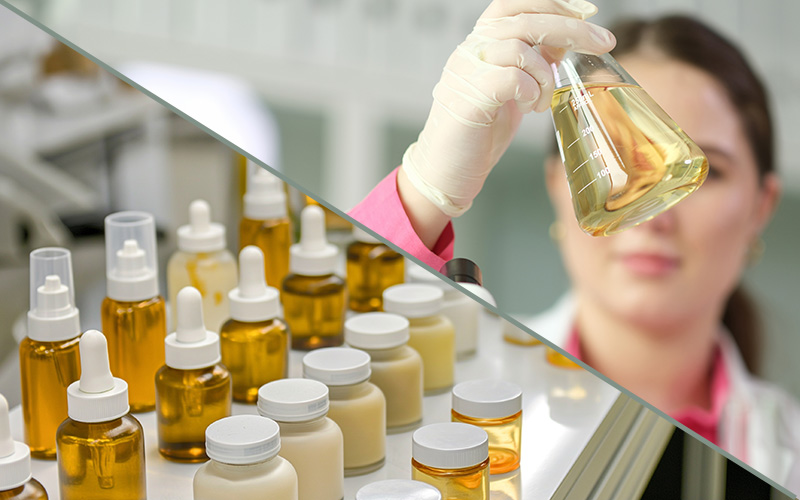Researching and developing products and making products for sale both involve MAKING products, but they are two very different things.
Research & Development
R & D is the process of figuring out and developing a product. That’s what you do when you want to create a new product or update an existing product.
R & D is done is little batches, tweaking this and that to get it just right. As a result, each R & D batch is different.
Products that are the result of R & D are not normally sold, since they are, by definition, experimental.
You should, of course, keep meticulous records of each tweak and change, so when you do hit on the perfect formulation you’ll know what you did to get there.
Once you finalize your product, have done all your testing (and maybe even market research), then you create your Master Formula and it goes into your lineup for production.
Production
Production is making your routine, regular, proven products that will be sold. Normally the batches are larger — usually as large as you can make them based on your economics, facility, and product turnover. The larger the batch, the more you have economy of scale.
Product batches are intended to be the same — exactly the same — every single time. They are based on the Master Formula you created as a result of your extensive experimentation and R & D. Since you are following a Master Formula, each batch you make of a product should end up exactly the same as the last batch you made.
When you are in production and following a Master Formula, you should be keeping records (a Batch Record) which details exactly what you did and how you did it.
Good Manufacturing Practices
Good manufacturing practices are generally thought to apply to the production cycle since they cover the manufacturing facility and personnel, ingredient tracking, master formulas, batch records, and quality control. If you are making decent products, you already have at least reasonable manufacturing practices in place. Per MoCRA, which updated the Food, Drug and Cosmetic Act in 2022, good manufacturing practices will be required (once they are written by the FDA) unless you are exempt as a small business.
That said, even if you aren’t required to follow the going-to-be-issued GMP regulations, having good manufacturing practices in place is still a necessity. Things like keeping your space clean, using clean materials, following a master formula, keeping records, and ensuring your helpers know what they are doing don’t go away just because there isn’t a government rule in place.
But what about in R & D? The same holds true. Some parts of the GMP guidelines don’t apply to R & D — but much of it does. Don’t ignore the basics of doing a good and clean job just because you are in R & D! Actually, in R & D some parts may be MORE important. If you have a problem with the product, how will you know if it’s a one-off issue or an actual problem with your preservative if you aren’t being meticulous in your cleanliness and keeping all your good processes and procedures in place?
The Bottom Line
R & D and production are similar, but not the same.
When you are making a product, know which “hat” you are wearing, act accordingly and keep the approriate records for that activity.
And throughout it all, keep in the good practices that are applicable to ensure that what you make — whether an experiment or a product for sale — is not contaminated and is as good as it possibly can be.


Leave a Reply